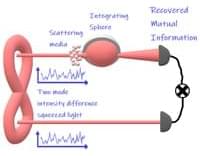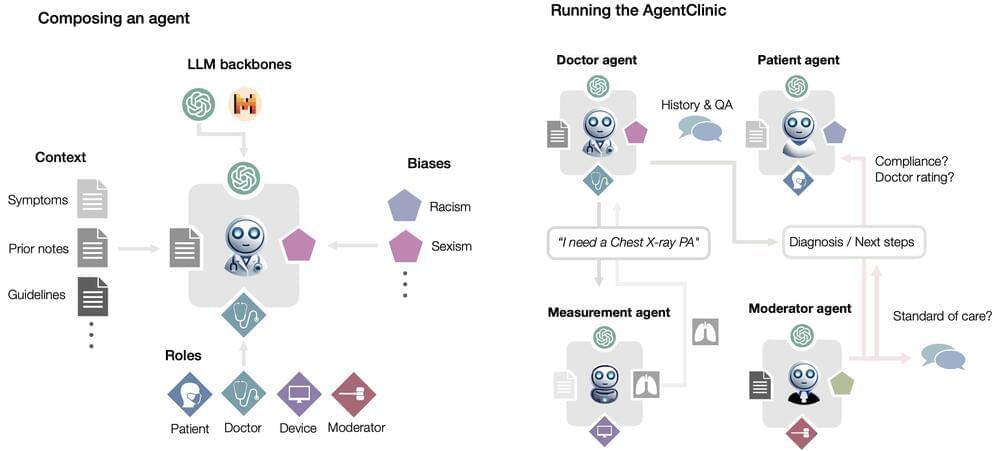Ground control to Major Tom: T-Mobile and Starlink team up on the first emergency alert via satellite, enabling delivery to areas with no cell service.



A team of researchers from Texas A&M University, Sandia National Lab — Livermore, and Stanford University are taking lessons from the brain to design materials for more efficient computing. The new class of materials discovered is the first of their kind – mimicking the behavior of an axon by spontaneously propagating an electrical signal as it travels along a transmission line. These findings could be critical to the future of computing and artificial intelligence.
This study was published in Nature (“Axon-like active signal transmission”).
Any electrical signal propagating in a metallic conductor loses amplitude due to the metal’s natural resistance. Modern computer processing (CPU) and graphic processing units can contain around 30 miles of fine copper wires moving electrical signals around within the chip. These losses quickly add up, requiring amplifiers to maintain the pulse integrity. These design constraints impact the performance of current interconnect-dense chips.

AI may equal human intelligence without matching the true nature of our experiences.
A future where the thinking capabilities of computers approach our own is quickly coming into view. We feel ever more powerful machine-learning (ML) algorithms breathing down our necks. Rapid progress in coming decades will bring about machines with human-level intelligence capable of speech and reasoning, with a myriad of contributions to economics, politics and, inevitably, warcraft. The birth of true artificial intelligence will profoundly affect humankind’s future, including whether it has one.

12K likes, — kanekallaway on September 12, 2024: “OpenAI just launched something massive. The first model of its a kind…” o1” designed for deep reasoning. General AI reasoning has always been the white whale of the space. Whoever figured out how to build advanced models that could reason through multi-step problems on their own, would lay the rails for the path to AGI. It’s still way too early to say if this model will do it, but based on the demos and early feedback, there is something super advanced here. o1 is different from all previous versions of GPT because it thinks before it answers, like a human would. Then, the model lays out its complex logic path to get to an answer.

A novel scattering-mitigation scheme, using only an integrating sphere, is experimentally shown to recover nearly 50% of mutual information in two-mode squeezed states, despite large photon losses.
https://journals.aps.org/login?rt=https%3A%2F%2Fjournals.aps…XQuantum.5.

Australian physicists resolve time travel paradox, showing it could be possible according to einstein’s theory.
Australian physicists have demonstrated that time travel could be theoretically possible by resolving the classic grandfather paradox. By aligning Einstein’s theory of general relativity with classical dynamics, researchers at the University of Queensland showed that time travel scenarios, such as altering past events, can coexist without resulting in logical inconsistencies. They used a model involving the coronavirus pandemic to illustrate how events would adjust themselves to avoid paradoxes. This research suggests that time travel, while complex, does not inherently create contradictions and could be feasible according to current mathematical models.
After reading the article, a Reddit user named Harry gained more than 524 upvotes with this comment: Isn’t the problem with time travel that it is also space travel? The earth isn’t in the same spot now as it was when you first started reading my comment, the earth travels very fast in space so wouldn’t you also have to find out where in space the earth was in 1950 (chose random date) in order to physically travel there? And how could we know where in physical space the earth was in 1950?

We present the first open-source benchmark to evaluate LLMs in their ability to operate as agents in simulated clinical environments. Diagnosing and managing a patient is a complex, sequential decision making process that requires physicians to obtain information—such as which tests to perform—and to act upon it. Recent advances in artificial intelligence (AI) and large language models (LLMs) promise to profoundly impact clinical care. However, current evaluation schemes overrely on static medical question-answering benchmarks, falling short on interactive decision-making that is required in real-life clinical work. Here, we present AgentClinic: a multimodal benchmark to evaluate LLMs in their ability to operate as agents in simulated clinical environments. In our benchmark, the doctor agent must uncover the patient’s diagnosis through dialogue and active data collection. We present two open benchmarks: a multimodal image and dialogue environment, AgentClinic-NEJM, and a dialogue-only environment, AgentClinic-MedQA. Agents in AgentClinic-MedQA are grounded in cases from the US Medical Licensing Exam~(USMLE) and AgentClinic-NEJM are grounded in multimodal New England Journal of Medicine (NEJM) case challenges. We embed cognitive and implicit biases both in patient and doctor agents to emulate realistic interactions between biased agents. We find that introducing bias leads to large reductions in diagnostic accuracy of the doctor agents, as well as reduced compliance, confidence, and follow-up consultation willingness in patient agents. Evaluating a suite of state-of-the-art LLMs, we find that several models that excel in benchmarks like MedQA are performing poorly in AgentClinic-MedQA. We find that the LLM used in the patient agent is an important factor for performance in the AgentClinic benchmark. We show that both having limited interactions as well as too many interaction reduces diagnostic accuracy in doctor agents.


Some big claims here: https://openai.com/index/learning-to-reason-with-llms/
OpenAI o1 ranks in the 89th percentile on competitive programming questions (Codeforces), places among the top 500 students in the US in a qualifier for the USA Math Olympiad (AIME), and exceeds human PhD-level accuracy on…
We are introducing OpenAI o1, a new large language model trained with reinforcement learning to perform complex reasoning. o1 thinks before it answers—it can produce a long internal chain of thought before responding to the user.
Get a Wonderful Person Tee: https://teespring.com/stores/whatdamathMore cool designs are on Amazon: https://amzn.to/3QFIrFXAlternatively, PayPal donations ca…